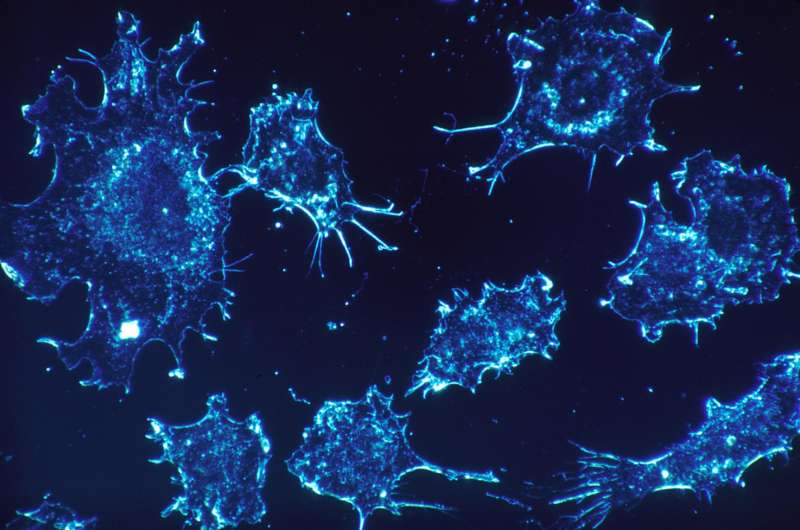Scientists identify potential new treatment strategy for kidney cancer

Researchers have provided new insight on the mechanisms behind the development of clear cell Renal Cell Carcinoma (ccRCC), according to new findings published in eLife.
The study in human cells and mice could have implications for how we understand and treat ccRCC—a major subtype of human kidney cancer.
Kidney cancer is one of the top 10 causes of death from cancer in both men and women. Inactivation of the tumour suppressor gene VHL is the primary cause of ccRCC, which is the most frequently occuring subtype of the disease. Tumour suppressor genes slow down cell division, repair DNA mistakes, and tell cells when to die. Mutations or inactivation of these genes stop them from working properly, which can lead to uncontrolled cell growth and cancer development.
"The disabling of VHL is usually followed by mutations in other tumour suppressor genes that are involved in ccRCC, such as PBRM1 and KDM5C," says co-first author Lili Liao, Postdoctoral Fellow at Jefferson (Philadelphia University + Thomas Jefferson University) and researcher at the Sidney Kimmel Cancer Center—Jefferson Health, Philadelphia, US. "These secondary tumour suppressors each have their own unique functions and their mutations are associated with different survival risks, yet they all collaborate with VHL loss to promote cancer development. In this study, we wanted to investigate whether they share a common tumour suppressor pathway that might be implicated in future ccRCC treatment."
While probing the gene expression patterns (the processes whereby instructions within DNA are converted into messenger RNA), the research team found that VHL, PBRM1, KDM5C, SETD2 and BAP1 all regulate the interferon stimulated gene factor 3 (ISGF3) - a master regulator that is key to viral infection response.
"We also saw that ISGF3 is strongly tumour-suppressive in a xenograft mouse model of ccRCC, as its loss enables tumours to increase significantly in size," explains co-senior author Haifeng Yang, Assistant Professor at Jefferson and researcher at the Sidney Kimmel Cancer Center—Jefferson Health. "Conversely, boosting ISGF3 in human ccRCC cancer cells shrinks the tumours they form into tiny nodules."
After VHL inactivation, it is known that the hypoxia-inducible factor (HIF)2 alpha becomes constantly active. HIFs respond to decreases in oxygen levels available within cellular environments. "We found that HIF2 alpha triggers the activation of ISGF3, which acts as a brake for tumour growth," Yang continues. "This brake can be disabled by the loss of any of the secondary tumour suppressors, suggesting that this is a key negative feedback loop in ccRCC."
"It is surprising to see that so many major tumour suppressor genes in ccRCC share the same target in ISGF3," adds co-senior author Qin Yan, Associate Professor of Pathology at Yale University, Connecticut, US. "As many critical cancer genes in kidney cancer converge on ISGF3, it might play significant roles in drug development, patient responses to treatments, and survival."
"There is a significant unmet clinical need to develop new strategies for treating ccRCC. Dr. Yang's breakthrough study brings us one step closer to this goal," concludes Dr. Karen E. Knudsen, Enterprise Director of the Sidney Kimmel Cancer Center at Jefferson Health.
More information: Lili Liao et al, Multiple tumor suppressors regulate a HIF-dependent negative feedback loop via ISGF3 in human clear cell renal cancer, eLife (2018). DOI: 10.7554/eLife.37925


















